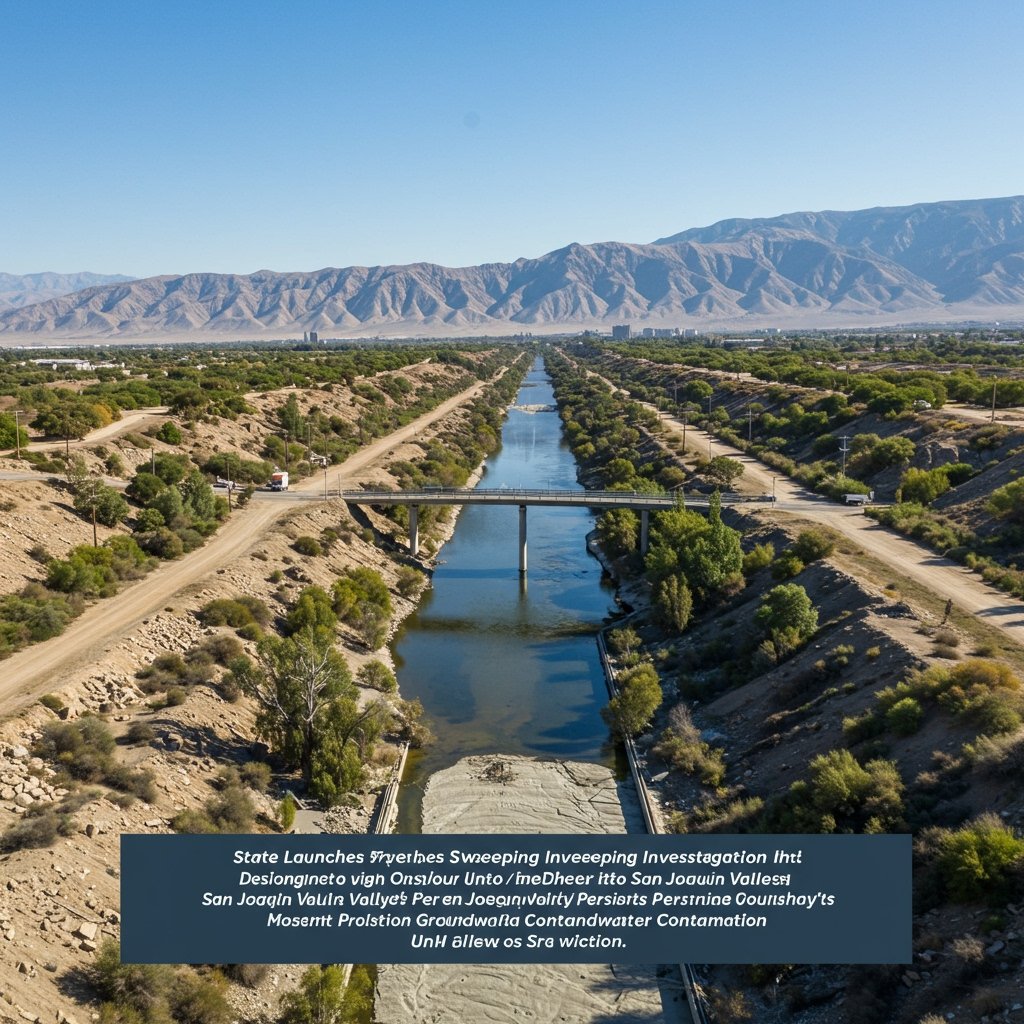State Launches Sweeping Investigation into San Joaquin Valley’s Persistent Groundwater Contamination
Sacramento, CA – In a significant regulatory action addressing a long-standing public health concern, the California State Water Resources Control Board (SWRCB) officially initiated a formal, in-depth investigation on February 18, 2025, into severe and widespread groundwater contamination impacting drinking water sources throughout the vast San Joaquin Valley. This comprehensive probe targets elevated levels of nitrates and specific pesticides found pervasively across the region, contaminants primarily linked to agricultural runoff from intensive farming operations and alleged historical industrial dumping activities.
The SWRCB’s decision to launch this formal inquiry was prompted by a confluence of compelling factors, underscoring the gravity and scope of the issue. Central among these triggers was the presentation of extensive data and research compiled by the environmental non-profit organization, Central Valley Water Advocates. For years, this group has meticulously documented instances of contamination, monitored water quality reports, and highlighted the disproportionate impact on vulnerable communities.
In addition to the data from Central Valley Water Advocates, the Board’s action was significantly influenced by a surge in direct public input. Over 75 citizen complaints were formally filed with the SWRCB since December 2024, originating from residents across the affected areas. These complaints provided critical, ground-level details, reporting not only concerns about water quality but also specific issues such as undesirable taste and odor in their tap water, and potential health impacts they attribute to prolonged exposure to contaminated drinking water.
The San Joaquin Valley, known as one of the world’s most productive agricultural regions, relies heavily on groundwater resources. Numerous rural communities within the valley are particularly reliant on domestic wells or small public water systems that draw from shallow aquifers, which are often the most susceptible to contamination from surface activities. Residents in these areas have expressed increasing frustration over the deteriorating quality of their essential water supply, citing the aesthetic issues and the potential long-term health risks associated with consuming water containing high levels of nitrates – which can be particularly dangerous for infants – and various pesticides with known or suspected health effects.
Scope and Focus of the Investigation
The SWRCB’s formal investigation is expected to be multi-faceted, employing a range of hydrological, chemical, and regulatory analyses. Investigators will delve into existing water quality monitoring data, conduct new sampling in key areas, and analyze historical land use patterns. A primary objective is to identify the specific sources contributing to the contamination, seeking to establish clear links between pollutant sources – whether from current agricultural practices, legacy contamination sites, or a combination thereof – and the impacted wells and water systems.
The focus on specific pesticides indicates an effort to move beyond general contamination concerns and target particular compounds known to persist in groundwater and pose health risks. Similarly, addressing nitrates, a common byproduct of fertilizers and animal waste, is critical given its widespread presence and the acute health risks, such as methemoglobinemia (blue baby syndrome), particularly in infants, and potential chronic health effects in adults.
Community Impact and Advocacy
The plight of residents in affected rural communities has been a driving force behind the increased scrutiny. Many households face the difficult choice of purchasing expensive bottled water, installing costly filtration systems, or continuing to use contaminated water for non-potable purposes while seeking alternative sources for drinking and cooking. The formal probe offers a glimmer of hope for these communities, signaling that their concerns are being heard at the state level.
The advocacy work by groups like Central Valley Water Advocates has been crucial in aggregating data, raising public awareness, and pressuring regulatory bodies to act. Their extensive data collection provided a robust technical foundation supporting the anecdotal evidence from citizen complaints, creating an undeniable case for immediate state intervention. The convergence of scientific data and personal testimonies proved pivotal in prompting the SWRCB’s formal response.
Regulatory Process and Potential Outcomes
SWRCB officials have indicated that the investigation will proceed with deliberate speed while maintaining scientific rigor. While the full inquiry may take considerable time to complete, initial findings are anticipated relatively soon. The Board stated that these initial findings are expected to be released by May 2025. This preliminary report may outline early trends, identify priority areas for intervention, or highlight key suspected sources based on initial data analysis.
The potential outcomes of the investigation are significant. Based on the findings, the SWRCB has the authority to pursue various regulatory actions. Under consideration are potential enforcement actions against parties identified as responsible for causing or contributing to the contamination. These actions could range from cleanup orders and requirements for source control to financial penalties.
Furthermore, the Board is considering mandating mitigation plans for identified responsible parties. Such plans could include requirements for updated farming practices, remediation of contaminated soil or groundwater, or funding for alternative water supplies or treatment systems for affected communities. The specific nature of any enforcement or mitigation requirement would depend heavily on the evidence gathered during the investigation and the applicable state and federal environmental regulations.
The launch of this formal probe represents a critical step in addressing the long-standing water quality challenges in the San Joaquin Valley. It acknowledges the severity and breadth of the contamination and initiates a process aimed at identifying responsible parties and potentially securing the resources needed to clean up affected water sources and ensure safe drinking water for all residents.



















